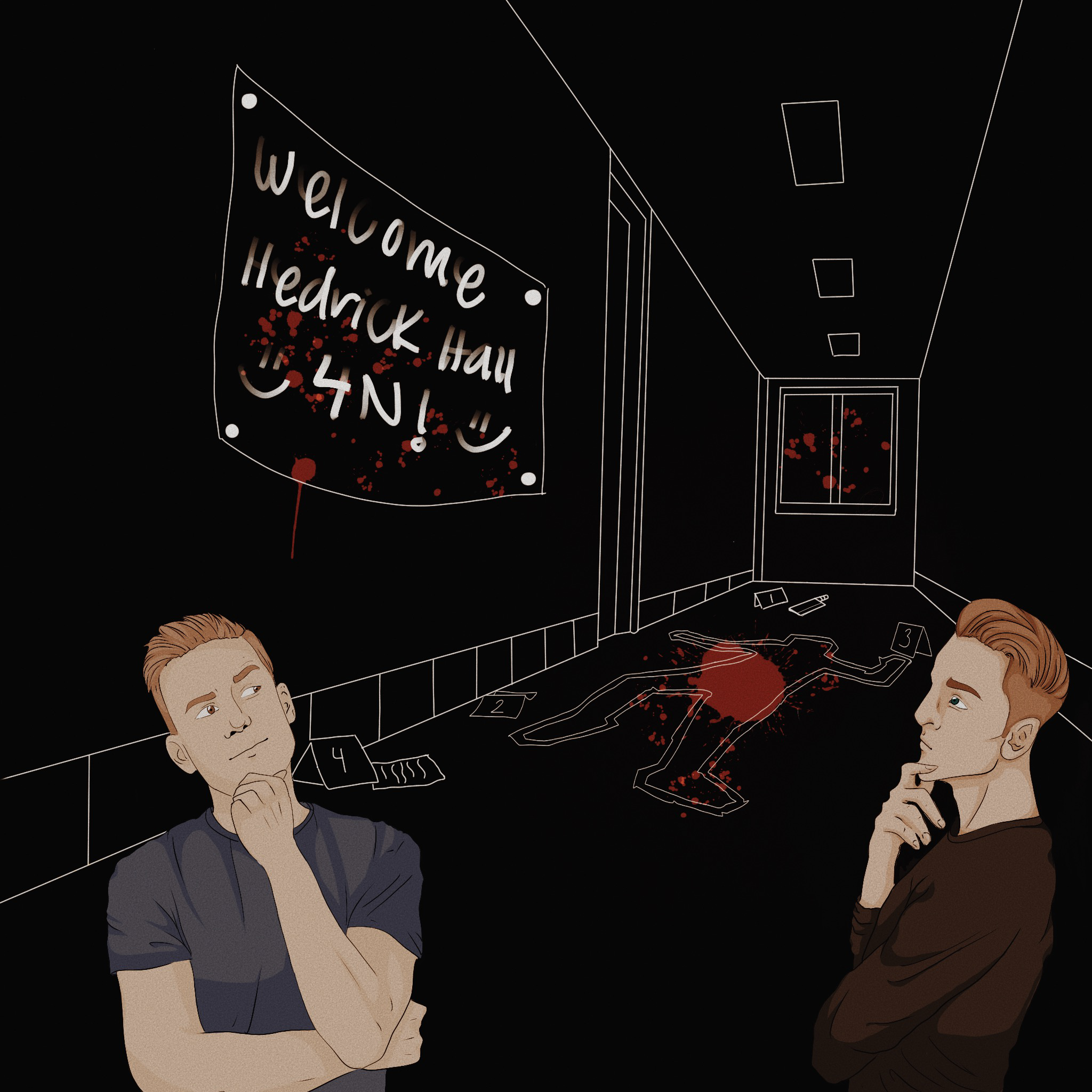The Quad: Looking back at when the slasher films of the ’80s crept onto UCLA’s campus

(Warda Sahib/Daily Bruin)

By Ryan Wu
Jan. 23, 2019 4:39 p.m.
In 1974, a group of novice filmmakers – some of whom were students at the University of Texas at Austin – finished working on a film about a masked cannibal stalking a group of five teens. It was titled “The Texas Chain Saw Massacre.”
The Austin American-Stateman called it important, while Harper’s Magazine called it pornography. Audiences, meanwhile, called their friends and flocked to the theater. The film became a smash hit.
Along with “Halloween” in 1978, “The Texas Chain Saw Massacre” helped kick-start the nascent “slasher” genre, a subgenre of horror that generally featured a group of teenagers being stalked by a masked killer. Up to the mid-’80s, slashers were among Hollywood’s most reliable moneymakers thanks to their low costs and high rates of return.
A student film
Like the crew who worked on “The Texas Chain Saw Massacre,” Jeffrey Obrow and Stephen Carpenter were students attending UCLA when they finished work on their own slasher flick, “Pranks,” in 1982. Made with a small budget of about $90,000, the film centered around college students who stay behind at an empty dorm over winter break to help clear it out.
New Image Releasing acquired U.S. distribution rights and set the release for April 1982. After a brief, unsuccessful run, the distributor pulled the film from theaters and released it again in the fall of 1983 as “The Dorm that Dripped Blood.”
In the meantime, the Motion Picture Association of America balked at the scenes featuring power drills and spiked bats. Four minutes of special effects had to be cut simply for the film to receive an R-rating. In the U.K., it barely made it off the infamous “video nasty” blacklist.
After all that, the film, released to an audience confused by the name change and betrayed by the relative lack of gore, only made about $215,000. The same year saw the monster success of the similarly university-themed “House on Sorority Row,” directed by fellow UCLA alumnus Mark Rosman and backed by producer Edward L. Montoro. It grossed $10.6 million from a $425,000 production budget.
Though it was largely forgotten, “The Dorm that Dripped Blood” managed to receive a brief namedrop in 1997’s “Scream 2,” one of the most successful slasher movies ever to date when adjusted for inflation.
A crash course in terror
Special effects artist Matthew W. Mungle first met Obrow and Carpenter in 1979. The latter two planned to direct a cheap slasher film as a way to break into the industry and wanted Mungle’s help in creating the special effects for a short proof of concept to show investors.
“I produced some ‘out-of-the-kit’ make-up effects for the short film including a cut-off hand and other small effects for just a few dollars,” Mungle wrote in an email statement.
Mungle would eventually be hired to create the special effects for the film itself.
The limited budget meant the mayhem had to be done for cheap. Still, Mungle found community in creating a film with so many young filmmakers.
“We were all new to the business and so very excited to be creating a slasher film, making it ‘work’ on such a tight budget,” he wrote.
In a way, everyone working on the project was a student. They were still getting into the groove and making mistakes: Some scenes are poorly dubbed, others poorly lit. At the time, Mungle had barely finished schooling at Joe Blasco’s Make-up Center when he was called to work on “The Dorm That Dripped Blood”; it was only his second major feature. In one scene, Mungle wrote that they used an effect involving monofilaments – thin, see-through threads – tied to blood bags, which were hidden underneath the actor’s clothing. When the monofilaments were pulled, the blood bags would simulate a sudden injury.
“It never fully worked as we kept shooting it over and over again and we all got very frustrated with the ‘monofilament gags,'” Mungle wrote. “Needless to say, (Obrow) has never let me forget it.”
Still, even with the mistakes, there’s a real energy to everything about the film. Carpenter suffuses the script with commentary on class privilege: A handyman gawks at how much furniture is thrown away by rich students, while a vagrant is falsely accused of stealing a drill. Young actors like Woody Rollas and Stephen Sachs are believably unhinged, while composer Christopher Young produces wild, “Insidious”-esque violin shrieks.
And despite the mediocre box office, Obrow and Carpenter’s plan for breaking into the industry worked. Obrow became a powerhouse music video producer, while Carpenter went on to create popular shows like NBC’s “Grimm.”
Mungle, meanwhile, continued to work in special effects, eventually winning an Oscar in 1993 for his work on “Dracula.” His company has done everything from providing cadavers for “CSI: Crime Scene Investigation” to creating the de-aging prosthetics for Scorsese’s “The Irishman.” Mungle eventually got the infamous monofilament gag to work in 1990’s “The Guardian.”
But Mungle still misses the early days.
“I miss those days tremendously as I’ve gotten older,” Mungle wrote. “I miss creating effects and prosthetics on smaller projects where everyone is creative and new to the industry.”
Sex, drugs and heads-will-roll
Slashers are often accused of being sloppy, juvenile fantasies. The sloppy part’s right; movies like “Friday the 13th” featured pioneering prosthetics work to bring punctured throats and decapitations to life.
But these films were also juvenile in a deeper way than just the blood and gore. Even at their biggest, slashers were the proving grounds for young actors, young directors, young screenwriters and young artists, and they brought their everyday experiences – ostracization, high school drama – with them. They brought their politics too: “The Texas Chain Saw Massacre” showed how America was eating its own counterculture. “Black Christmas” handled the abortion debate and the rise of feminism.
Violent film, student film, teen film, political film – “The Dorm that Dripped Blood” was like any other slasher: oozing with youth.
Every age comes to an end. “Sweet Sixteen” gave way to “Sixteen Candles.” The slasher became bottom-shelf fodder for Blockbuster. Students graduated, grew old.
But pieces endure, floods leave tide marks, and the slasher boom changed America. American censors loosened restriction on violence. “Scream” single-handedly made the meta mainstream.
“The Dorm that Dripped Blood” left its own aftershock: a Blu-ray Disc version that came out in 2011, gore scenes included. Mungle’s effects still hold up; the drill scene, done with a plaster head instead of the standard latex, looks particularly good. Still, in a post-“Saw” world, it’s hard to imagine that modern ratings boards would object to those scenes.
But we have slashers – young films at heart – to thank for that lenience. It was through them that the students shook the world.


